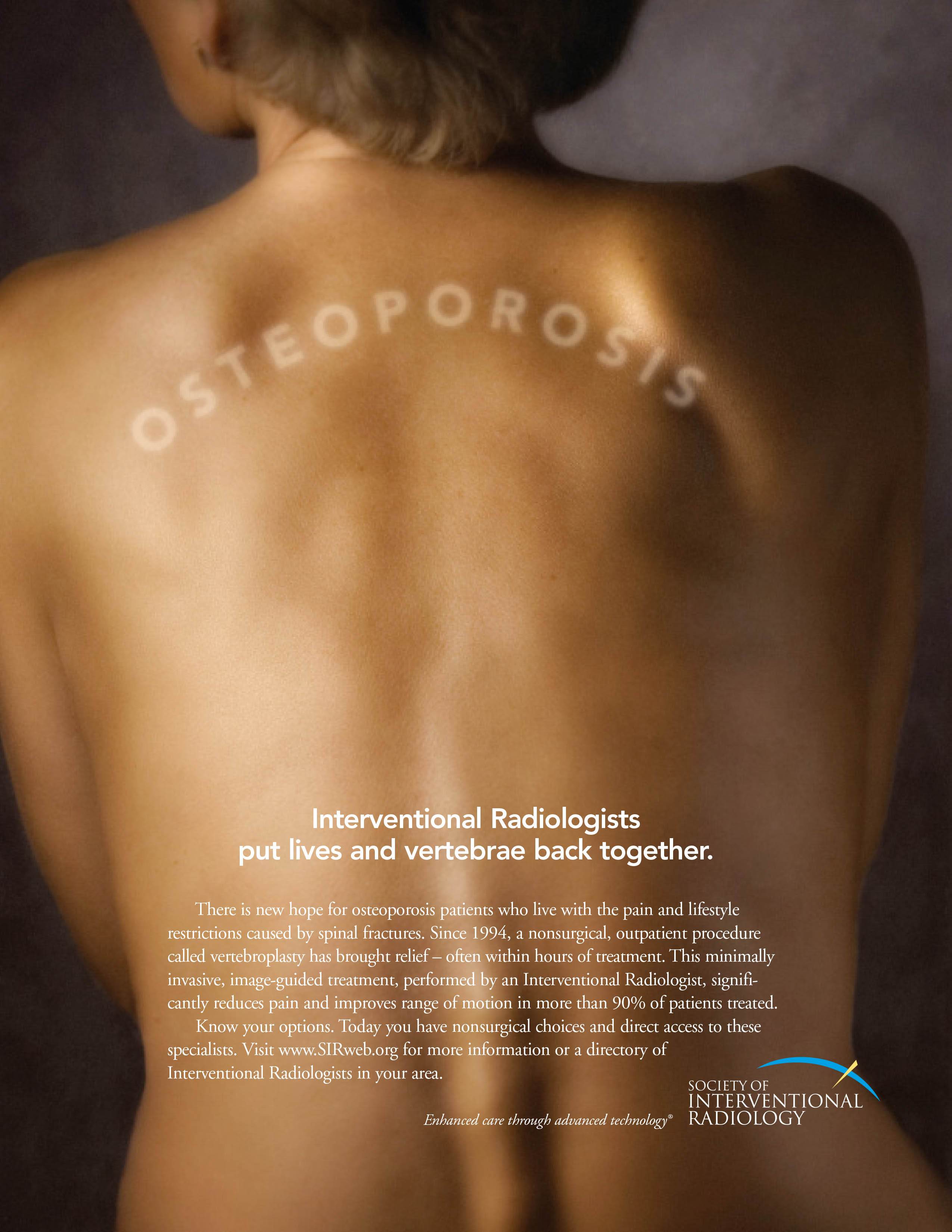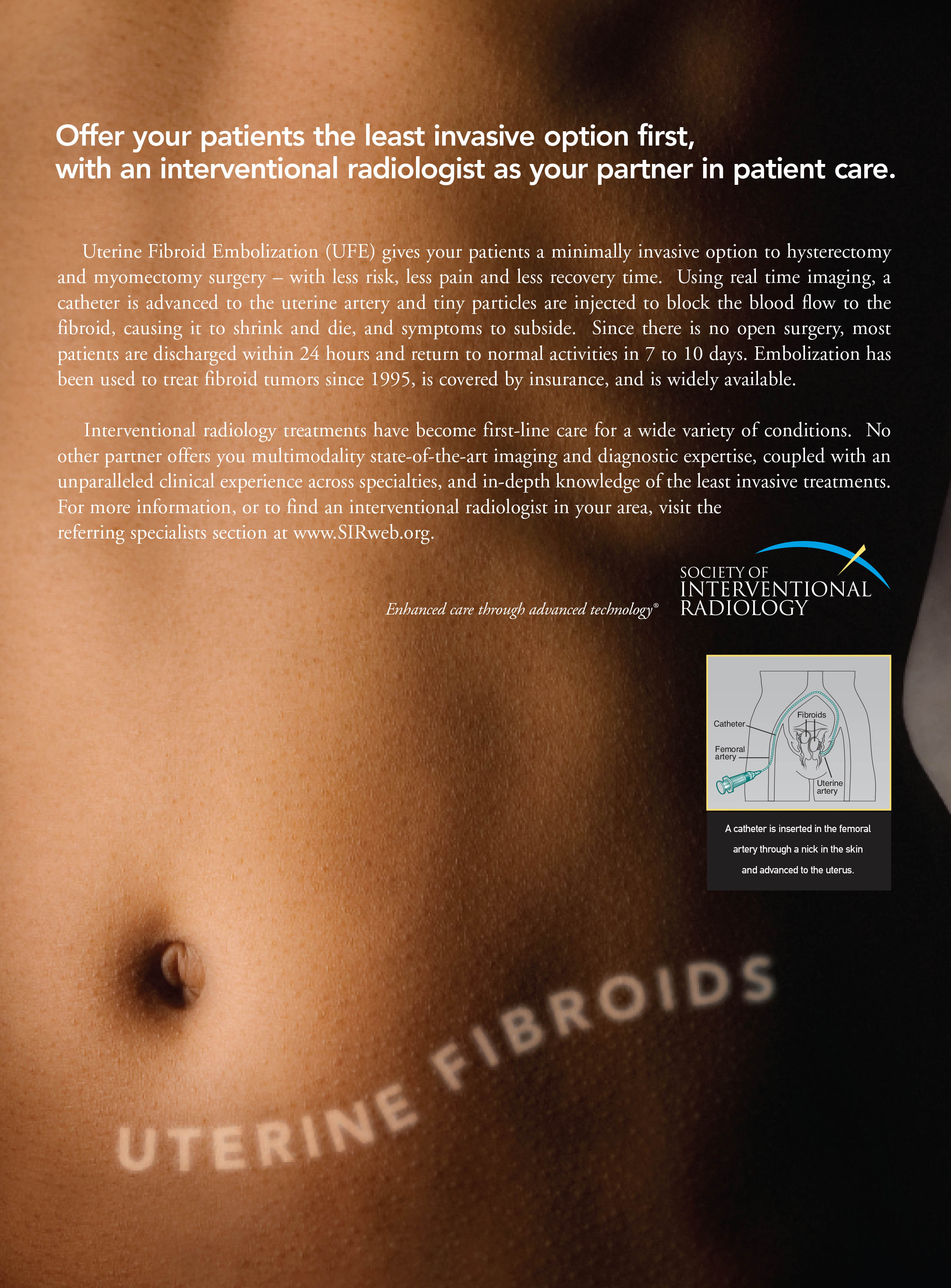
Interventional radiology (abbreviated IR or VIR for Vascular and Interventional Radiology, also referred to as Surgical Radiology) is a medical sub-specialty of radiology that uses minimally invasive image-guided procedures to diagnose and treat diseases in nearly every organ system. The concept behind interventional radiology is to diagnose and treat patients using the least invasive techniques currently available in order to minimize risk to the patient and improve health outcomes. As the inventors of angioplasty and the catheter-delivered stent, interventional radiologists pioneered modern minimally invasive medicine. Using X-rays, CT, ultrasound, MRI, and other imaging modalities, interventional radiologists obtain images which are then used to direct interventional instruments throughout the body. These procedures are usually performed using needles and narrow tubes called catheters, rather than by making large incisions into the body as in traditional surgery. Many conditions that once required surgery can now be treated non-surgically by interventional radiologists. By minimizing the physical trauma to the patient, peripheral interventions can reduce infection rates and recovery time, as well as shorten hospital stays.
Angiography :-
Imaging the blood vessels to look for abnormalities with the use of various contrast media, including iodinated contrast, gadolinium based agents, and CO2 gas.
Balloon angioplasty/stent :-
Opening of narrow or blocked blood vessels using a balloon; may include placement of metallic stents as well (both self-expanding and balloon expandable).
Cholecystostomy :-
Placement of a tube into the gallbladder to remove infected bile in patients with cholecystitis, an inflammation of the gallbladder, who are too frail or too sick to undergo surgery.
Drain insertions :-
Placement of tubes into different parts of the body to drain fluids (e.g., abscess drains to remove pus, pleural drains). A common problem is that these tubes get clogged and have to be replaced or removed before all the material is drained.
Embolization :-
Blocking abnormal blood (artery) vessels (e.g., for the purpose of stopping bleeding) or organs (to stop the extra function e.g. embolization of the spleen for hypersplenism) including uterine artery embolization for percutaneous treatment of uterine fibroids. Various embolic agents are used, including alcohol, glue, metallic coils, poly-viny alcohol particles, Embospheres, encapsulated chemo-microsphere, and gelfoam.
Chemoembolization :-
Delivering cancer treatment directly to a tumour through its blood supply, then using clot-inducing substances to block the artery, ensuring that the delivered chemotherapy is not "washed out" by continued blood flow.
Radioembolization:-
Embolization of tumors with radioactive microspheres of glass or plastic, to kill tumors while minimizing exposure to healthy cells.
Thrombolysis:-
Treatment aimed at dissolving blood clots (e.g., pulmonary emboli, leg vein thrombi, thrombosed hemodialysis accesses) with both pharmaceutical (TPA) and mechanical means.
Biopsy
Taking of a tissue sample from the area of interest for pathological examination from a percutaneous or transjugular approach.
Radiofrequency ablation (RF/RFA) :-
Localized destruction of tissue (e.g., tumours) by heating.
Cryoablation :-
Localized destruction of tissue by freezing.
Central venous catheter placement:-
Vascular access and management of specialized kinds of intravenous devices (IVs) (e.g. PIC lines, Hickman lines, subcutaneous ports including translumbar and transhepatic venous lines).
IVC filters :-
Metallic filters placed in the inferior vena cavae to prevent propagation of deep venous thrombus, both temporary and permanent.
Vertebroplasty :-
Percutaneous injection of biocompatible bone cement inside fractured vertebrae.
NephrPlacing a catheter directly into the kidney to drain urine in situations where normal flow of urine is obstructed. NUS catheters are nephroureteral stents which are placed through the ureter and into the bladder.
Radiologically inserted gastrostomy or RIG :-
Placement of a feeding tube percutaneously into the stomach and/or jejunum.
Dialysis access and related interventions :-
Placement of tunneled hemodialysis catheters, peritoneal dialysis catheters, and revision/thrombolysis of poorly functioning surgically placed AV fistulas and grafts.
TIPS :-
Placement of a Transjugular Intrahepatic Porto-systemic Shunt (TIPS) for management of select patients with critical end-stage liver disease and portal hypertension.
Biliary intervention :-
Placement of catheters in the biliary system to bypass biliary obstructions and decompress the biliary system. Also placement of permanent indwelling biliary stents.
Endovenous laser treatment of varicose veins
Uterine fibroids are non-cancerous growths of the muscular portion of the uterus which may cause pain and heavy bleeding. Interventional radiologists are able to perform non-surgical, minimally invasive treatments of uterine fibroids, called uterine fibroid embolization (UFE), or uterine artery embolization (UAE), using real-time imaging. In this procedure, the interventional radiologist accesses the uterine arteries via a catheter in the femoral or radial artery. The physician guides the catheter into the uterine arteries that supply blood to the fibroid and then releases tiny particles or coils through the catheter to occlude the blood supply of the tumor, causing it to shrink and die. Fibroid embolization may require a hospital stay of one night, but is often done safely as an outpatient procedure.[12] A procedure without complications can take as little as 30 minutes and the patient can stand up and walk out of the OR unaided. On average, 85-90 percent of women who have had the procedure experience significant or total relief of heavy bleeding, pain and/or bulk-related symptoms. Recurrence of fibroids treated by UFE is very rare.
The growth of interventional radiology was fueled by ties between interventionalists such as Charles Dotter and innovative device manufacturers like Bill Cook. Interventional radiologist Charles Dotter, MD, known as the "Father of Interventional Radiology" for pioneering this technique, was nominated for the Nobel Prize in Physiology or Medicine in 1978.
Alexander Margulis coined the term "interventional" for these new, minimally invasive techniques. In 1969, Dotter conceived the idea of expandable stents with an intra-arterial coil spring.
Who Are Interventional Radiologists? :-
Interventional radiologists are board-certified physicians who specialize in minimally invasive, targeted treatments. They offer the most in-depth knowledge of the least invasive treatments available coupled with diagnostic and clinical experience across all specialties. They use X-rays, MRI and other imaging to advance a catheter in the body, usually in an artery, to treat at the source of the disease internally. As the inventors of angioplasty and the catheter-delivered stent, which were first used in the legs to treat peripheral arterial disease, interventional radiologists pioneered minimally invasive modern medicine. Today many conditions that once required surgery can be treated less invasively by interventional radiologists. Interventional radiology treatments offer less risk, less pain and less recovery time compared to open surgery.
An X-ray exam of the arteries and veins to diagnose blockages and other blood vessel problems; uses a catheter to enter the blood vessel and a contrast agent (X-ray dye) to make the artery or vein visible on the X-ray.
Blood vessel abnormalities in the brain or elsewhere. If untreated, AVMs can rupture, causing life-threatening bleeding. Interventional radiologists can often treat these abnormalities without surgery by guiding thin catheters to the site and injecting a substance that blocks the supply of blood to the affected blood vessels.
Opens blocked or narrowed blood vessels by inserting a very small balloon into the vessel and inflating it. Used by IRs to unblock clogged arteries in the legs or arms (called peripheral arterial disease or PAD), kidneys, brain or elsewhere in the body.
Uses a stent (small mesh tube) to open up blocked ducts and allow bile to drain from the liver.
Interventional radiologists can pinpoint the area of internal bleeding with angiography and inject a clotting substance, such as a gel, foam or tiny coils, through a thin catheter to stop the bleeding.
Insertion of a tube beneath the skin and into the blood vessels so that patients can receive medication or nutrients directly into the blood stream or so blood can be drawn.
Delivery of cancer-fighting agents directly to the site of a cancer tumor; currently being used mostly to treat cancers of the endocrine system and liver cancers.
Delivery of clotting agents (coils, plastic particles, gel, foam, etc.) directly to an area that is bleeding or to block blood flow to a problem area, such as an aneurysm or a fibroid tumor in the uterus.
Feeding tube inserted into the stomach for patients who are unable to take sufficient food by mouth.
Use of angioplasty or thrombolysis to open blocked grafts for hemodialysis, which treats kidney failure.
In some patients with high blood pressure, the condition is caused by a narrowing of the arteries in the kidneys. The problem, called renal hypertension, often can be treated with angioplasty.
Patients with a variety of illnesses may develop an area of persistent infection (abscess) in the body. The infection can be drained by inserting a catheter through a small nick in the skin and to the site of the infection. Also used to treat complications of open surgery.
Diagnostic test for breast, lung and other cancers; an alternative to surgical biopsy.
Use of radiofrequency (RF) energy to "cook" and kill cancerous tumors.
A small flexible tube made of plastic or wire mesh, used to treat a variety of medical conditions (e.g., to hold open clogged blood vessels or other pathways that have been narrowed or blocked by tumors or obstructions).
Reinforces a ruptured or ballooning section of an artery (an aneurysm) with a fabric-wrapped stent C a small, flexible mesh tube used to "patch" the blood vessel. Also known as an endograph.
Dissolves blood clots by injecting clot-busting drugs at the site of the clot. Treats blood clots in the brain to reverse the effects of stroke; treats deep vein thrombosis in the leg to prevent permanent disability.
A life-saving procedure to improve blood flow and prevent hemorrhage in patients with severe liver dysfunction.
Urinary Tract ObstructionThe ureter carries urine from the kidneys to the bladder and sometimes becomes blocked by kidney stones or other obstructions. The interventional radiologist inserts a catheter through a small nick in the skin and into the blocked kidney to drain the urine.
An embolization procedure of uterine arteries to stop life-threatening postpartum bleeding, potentially preventing hysterectomy. The same procedure is used to treat fibroid tumors and is then called UFE (Uterine Fibroid Embolization).
Cuts off the blood supply to the fibroid, causing them to shrink and die, and symptoms to subside (also known as uterine artery embolization).
A treatment for "varicose veins" in the scrotum, which can cause male infertility and pain.
The saphenous vein is sealed shut through the use of a laser or radio frequency non-surgically.
A tiny cage-like device that is inserted in a blood vessel to break up clots and prevent them from reaching the heart or lungs. Prevents pulmonary embolism.
A pain treatment for fractured vertebra in which medical-grade bone cement is injected into the vertebra.
Interventional Radiology Treatments Are First-line Care
Interventional Radiology Offers Patients Nonsurgical Choices
For many years, surgery was the only treatment available for many conditions. Today, interventional radiology treatments are first-line care for a wide variety of conditions. Patients should be offered the least invasive option first. It is important to get a second opinion and know all of your treatment options before consenting to any procedure or surgery. Interventional radiologists are specialists in minimally invasive treatments, have a unique breadth of training and provide consults to every type of specialist. The ads below offer a quick overview of interventional radiology treatments for common conditions. For a full description of the minimally invasive treatments available, visit our Patients section.






29, Shanti Nagar, Above Canara Bank,, Shri Nagar Extension, Khajrana Road, Indore, Madhya Pradesh 452001
Phone:- 0731-4970807, 9285270808, 9752970807
Email: thebiopsy2016@gmail.com
Follow us